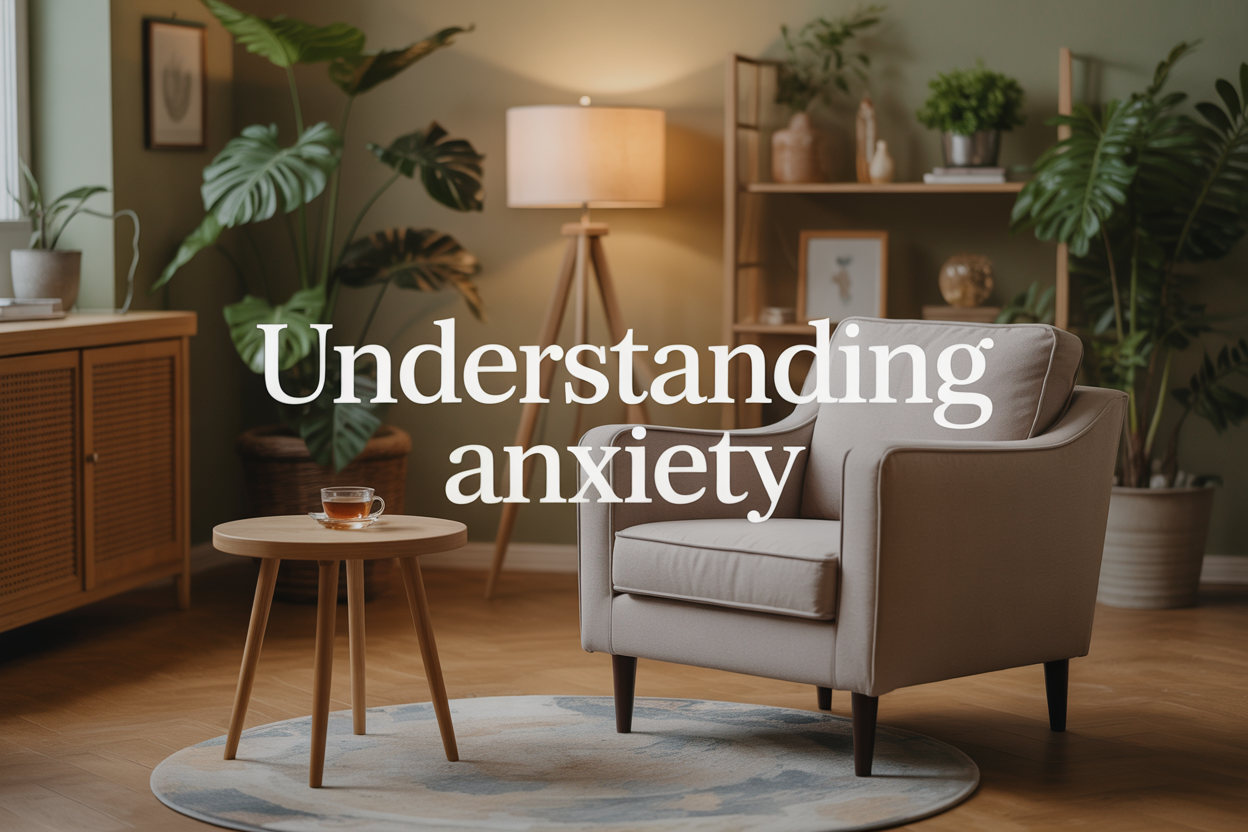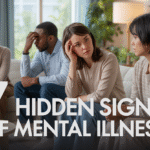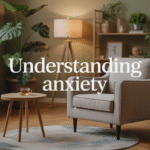Everyone feels anxious sometimes, but anxiety disorders are different. If you’re someone who struggles with persistent worry, fear that disrupts your daily life, or physical symptoms like racing heart and sweating, you’re not alone. Understanding what is anxiety and recognizing when normal worries become something more serious can help you take the right steps toward feeling better.
This guide is written for anyone experiencing overwhelming anxiety – whether you’re a parent concerned about your teen, someone who’s always been a “worrier,” or dealing with sudden anxiety symptoms that seem to come out of nowhere. We’ll walk through what anxiety symptoms actually look like beyond just “feeling worried,” explore the main types of anxiety disorders including generalized anxiety disorder and panic disorder, and help you understand the various anxiety causes and risk factors that might be contributing to your experience.
You’ll also learn practical anxiety prevention strategies and anxiety self-care techniques, plus how to know when it’s time to seek professional help.
Understanding What Anxiety Really Is
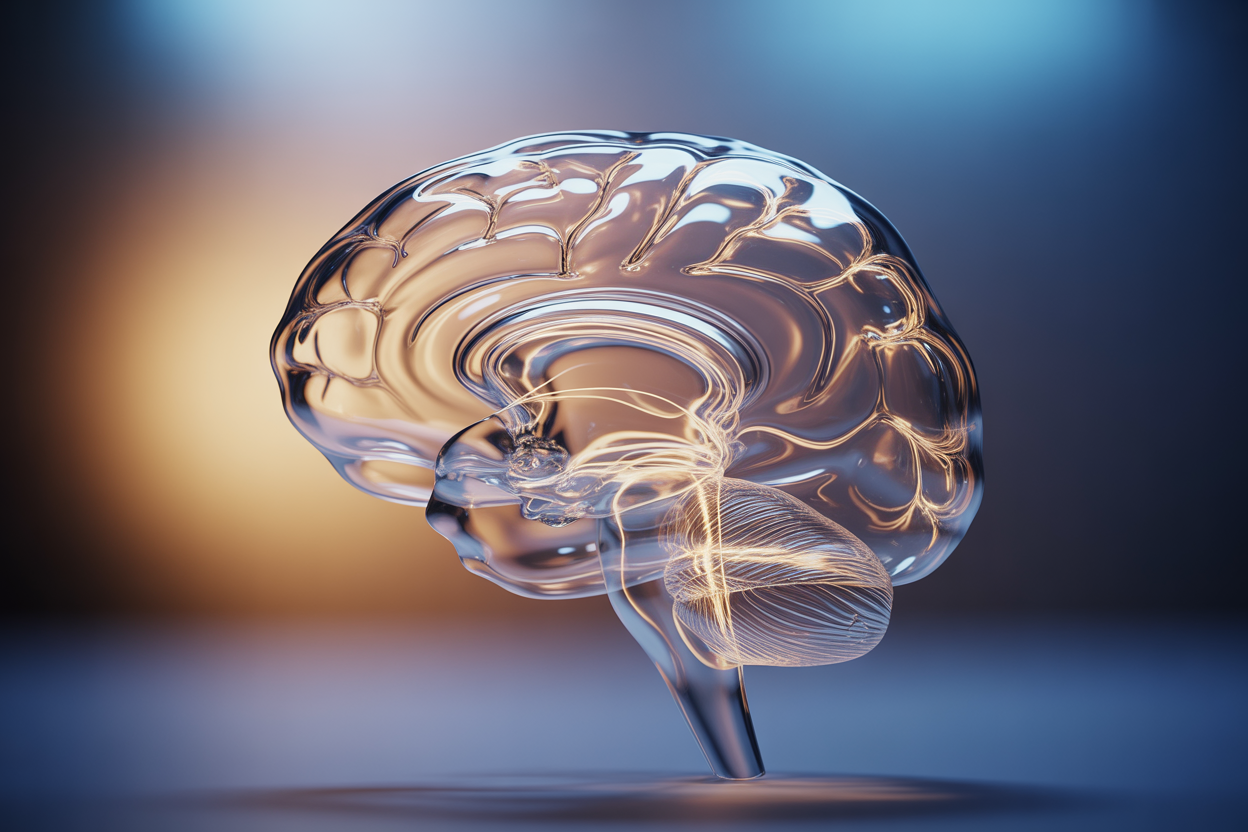
Distinguishing Normal Anxiety from Anxiety Disorders
Experiencing occasional anxiety is a completely normal part of life, and it’s important to understand that some anxiety can even be beneficial. Normal anxiety helps us notice dangerous situations, focuses our attention, and keeps us safe. You might feel anxious or nervous before tackling a problem at work, going to an interview, taking an important test, or making a significant decision – these are all typical responses to challenging situations.
However, anxiety disorders go far beyond regular nervousness and occasional fear. The key distinction lies in how anxiety affects your daily functioning and your ability to control your responses. An anxiety disorder develops when anxiety interferes with your ability to function normally, when your reactions are consistently out of proportion to the actual situations you’re facing, and when you find yourself unable to control your responses to various circumstances.
People with anxiety disorders frequently experience intense, excessive, and persistent worry and fear about everyday situations. These feelings are difficult to control and are disproportionate to the actual danger present. Unlike normal anxiety that comes and goes with specific situations, anxiety disorders involve feelings that can last for extended periods and may include repeated episodes of sudden, intense anxiety and fear that reach a peak within minutes, known as panic attacks.
How Anxiety Interferes with Daily Life Activities
Anxiety disorders create significant disruptions in multiple areas of daily functioning. The interference extends far beyond occasional worry, creating barriers that prevent individuals from participating fully in work, relationships, and social activities.
Common signs that anxiety is interfering with daily life include feeling nervous, restless, or tense on a regular basis, experiencing a persistent sense of impending danger, panic, or doom, and having physical symptoms such as increased heart rate, rapid breathing, sweating, and trembling. Many people with anxiety disorders also experience fatigue, weakness, and difficulty concentrating or thinking about anything other than their present worry.
Sleep disturbances are particularly common, with many individuals having trouble falling asleep or staying asleep due to racing thoughts and persistent worry. Digestive problems, including upset stomach and other gastrointestinal issues, frequently accompany anxiety disorders. Perhaps most significantly, people with anxiety disorders often develop an overwhelming urge to avoid things that trigger their anxiety, which can severely limit their participation in work, school, social situations, and other important life activities.
The avoidance behaviors associated with anxiety disorders can be particularly debilitating. Individuals may avoid specific places or situations to prevent uncomfortable feelings, leading to social isolation and problems functioning at school or work. This avoidance can create a cycle where the anxiety becomes stronger over time, as the person’s world becomes increasingly limited.
Recognizing When Occasional Worry Becomes a Problem
Understanding when occasional worry crosses the line into an anxiety disorder requiring professional attention is crucial for early intervention and effective treatment. Several key indicators signal that anxiety has become problematic and may warrant professional evaluation.
You should consider seeking help when you feel like you’re worrying too much and this worry is interfering with your work, relationships, or other important parts of your life. If your fear, worry, or anxiety has become upsetting and difficult to control, this suggests that your anxiety may have progressed beyond normal levels.
The timing and pattern of anxiety can also provide important clues. If you experience a sudden onset of anxiety that seems unrelated to life events and you have no previous history of anxiety, this may indicate an underlying issue that needs attention. Similarly, if you find yourself consistently avoiding certain things or situations because of anxiety, this avoidance pattern suggests that the anxiety has become problematic.
Other warning signs include feeling depressed alongside your anxiety, having trouble with alcohol or drug use, or experiencing other mental health concerns in combination with anxiety. If you suspect your anxiety could be linked to a physical health problem, it’s important to seek medical evaluation, as various medical conditions can contribute to or cause anxiety symptoms.
The presence of suicidal thoughts or behaviors requires immediate professional intervention. Additionally, if your worries persist and seem to be getting worse over time despite your efforts to manage them, professional help can provide effective treatment options. Early intervention is particularly beneficial, as anxiety disorders are typically easier to treat when addressed promptly rather than allowing symptoms to worsen over time.
Exploring Different Types of Anxiety Disorders
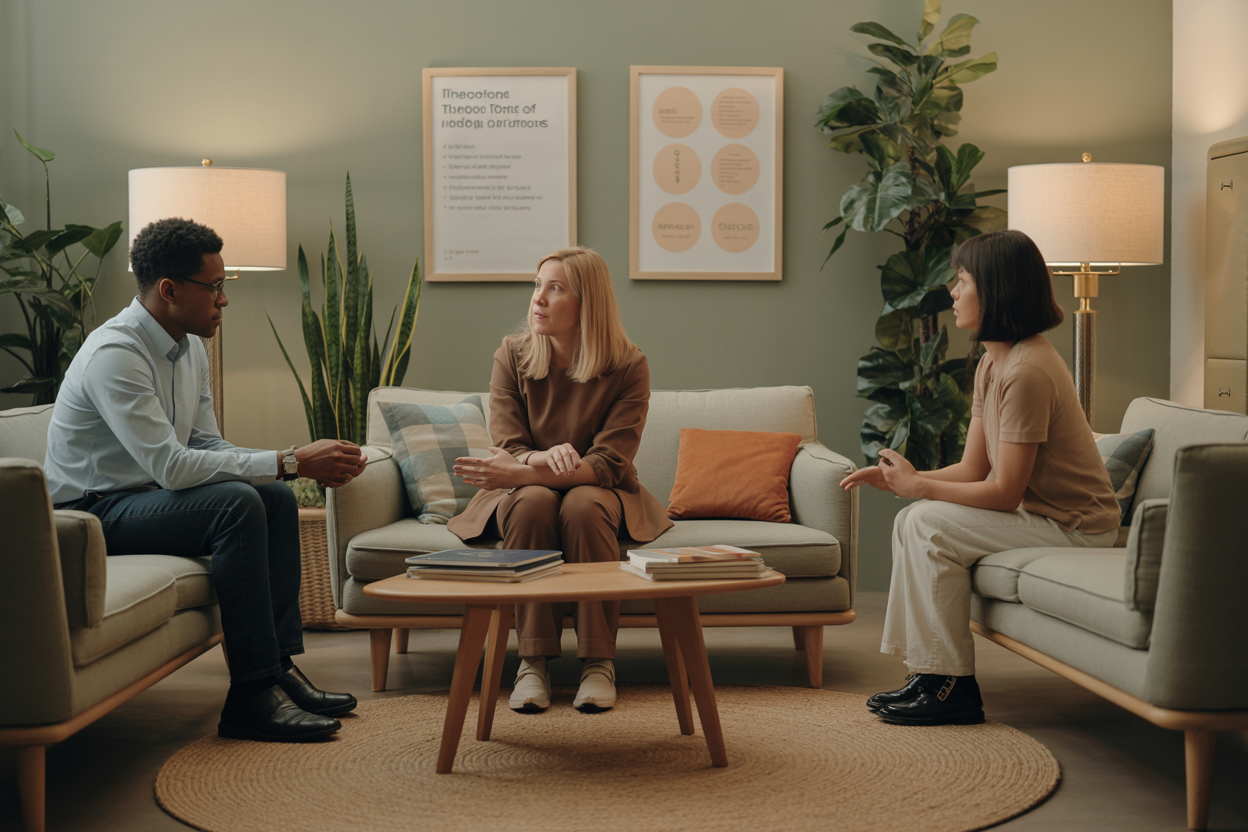
Generalized Anxiety Disorder and Persistent Worry
Generalized Anxiety Disorder (GAD) represents one of the most common anxiety disorders, characterized by persistent and excessive worry that significantly interferes with daily activities. This ongoing worry and tension typically manifests alongside physical symptoms including restlessness, feeling on edge, easy fatigue, difficulty concentrating, muscle tension, and sleep problems.
What distinguishes GAD from normal worry is its excessive, frequent, and unrealistic nature regarding everyday situations. People with this condition experience fear, worry, and a constant feeling of being overwhelmed about routine matters such as:
- Job responsibilities and work performance
- Family health and relationships
- Minor daily concerns like chores and appointments
- Car repairs and maintenance issues
- Financial obligations and budgeting
The worry associated with GAD is typically out of proportion to the actual situation and persists for extended periods. Unlike situational anxiety that resolves when the stressor passes, GAD involves chronic anxiety that affects approximately 3% of the U.S. population, making it a significant mental health concern.
Panic Disorder and Sudden Terror Episodes
Panic disorder centers around recurrent panic attacks—overwhelming combinations of physical and psychological distress that occur unexpectedly. These sudden terror episodes can happen without warning and aren’t typically due to another mental health or physical condition.
During a panic attack, multiple symptoms occur simultaneously, creating an intense and frightening experience:
Physical Symptoms:
- Palpitations, pounding heart, or rapid heart rate
- Sweating and trembling or shaking
- Shortness of breath or smothering sensations
- Chest pain and feeling of choking
- Dizziness, light-headedness, or faintness
- Numbness or tingling sensations
- Chills or hot flashes
- Nausea or abdominal pains
Psychological Symptoms:
- Fear of losing control
- Fear of dying
- Feeling detached from reality
The severity of these symptoms often leads people to believe they’re experiencing a heart attack or other life-threatening illness, frequently resulting in emergency department visits. The mean age for panic disorder onset is 20-24 years, and these attacks may occur alongside other mental health conditions such as depression or PTSD.
Social Anxiety and Fear of Social Situations
Social anxiety disorder, previously known as social phobia, involves significant anxiety and discomfort about being embarrassed, humiliated, rejected, or negatively judged in social interactions. This condition affects approximately 7% of the U.S. population, making it one of the more prevalent anxiety disorders.
People with social anxiety disorder either actively avoid triggering situations or endure them with great distress. Common manifestations include:
- Extreme fear of public speaking
- Anxiety about meeting new people
- Fear of eating or drinking in public settings
- Worry about social performance and evaluation
- Avoidance of group activities or social gatherings
The fear or anxiety must cause significant problems with daily functioning and persist for at least six months to warrant a diagnosis. This persistent nature distinguishes social anxiety disorder from occasional social nervousness that most people experience.
Specific Phobias and Avoidance Behaviors
Specific phobias involve excessive and persistent fear of particular objects, situations, or activities that are generally not harmful. Despite patients recognizing that their fear is excessive, they cannot overcome it independently. These intense fears cause such distress that individuals often go to extreme lengths to avoid their feared stimulus.
Specific phobias affect up to 12% of the U.S. population, making them the most common anxiety disorders. Examples include:
- Fear of flying (aviophobia)
- Fear of spiders (arachnophobia)
- Fear of public speaking
- Fear of heights (acrophobia)
- Fear of medical procedures
The avoidance behaviors associated with specific phobias can significantly disrupt daily life, career opportunities, and personal relationships. The fear response is consistently and overwhelmingly disproportionate to any actual danger posed by the phobic stimulus.
Other Anxiety Disorders Affecting Daily Functioning
Several additional anxiety disorders significantly impact daily functioning and quality of life:
Agoraphobia affects up to 1.7% of the U.S. population and involves intense fear of situations where escape might be difficult or help unavailable during panic symptoms. This fear occurs in two or more situations including using public transportation, being in open or enclosed spaces, standing in crowds, or being outside the home alone. Untreated agoraphobia can become so severe that individuals become housebound.
Separation Anxiety Disorder affects approximately 4% of children, 1.6% of adolescents, and up to 1.9% of adults. This condition involves excessive fear or anxiety about separation from attachment figures, lasting at least four weeks in children and six months in adults.
Selective Mutism represents the least common anxiety disorder, affecting between 0.47% and 0.76% of the population. Children with this condition fail to speak in specific social situations where speech is expected, such as school, despite speaking normally in other settings like home with immediate family members.
Understanding Root Causes and Risk Factors

Genetic Predisposition and Family History
Research reveals that anxiety risk factors include significant genetic components that run in families. Population-based family studies demonstrate compelling evidence for genetic predisposition, with children of parents diagnosed with Generalized Anxiety Disorder (GAD) showing significantly higher odds ratios ranging from 2.1 to 2.6 for developing the condition themselves, even after accounting for other mental health conditions like major depressive disorder.
Meta-analytical studies integrating both family and twin research have calculated a recurrence odds ratio of 6.1 and established genetic heritability at 31.6%. Remarkably, the same predisposing genes affect both sexes equally, though females show a small influence from common familial environment factors, while the remaining variance stems from individual-specific environmental influences.
Recent groundbreaking research from Yale School of Medicine has revolutionized our understanding of genetic predisposition to anxiety disorders. Investigators analyzed genetic profiles from over one million participants across multiple global cohorts, uncovering more than 100 genes associated with anxiety. This extensive study, published in Nature Genetics, demonstrates how multiple genes acting on different brain functions contribute to individual genetic risk profiles.
Community twin studies reveal two independent genetic factors for GAD. One factor associates more closely with panic disorder, agoraphobia, and social anxiety disorder, while another shows higher correlation with specific phobias. Together, these genetic factors account for 23% of the genetic variance in GAD liability, with unique environmental factors representing the remainder.
The genetic architecture of anxiety varies across different life stages. In childhood, a common genetic factor influences generalized anxiety, separation anxiety, social phobia, and panic symptoms, but notably excludes depression. During adolescence, high genetic correlation emerges between depression and generalized anxiety (0.71-0.74), while young adulthood shows high genetic correlation among all internalizing conditions with some unique influences.
Traumatic Experiences and Life Events
While the reference content primarily focuses on genetic factors, the relationship between anxiety causes and life experiences remains interconnected with genetic predisposition. The research indicates that individual-specific environmental factors contribute significantly to anxiety development, suggesting that traumatic experiences and life events interact with genetic vulnerabilities to influence anxiety disorder manifestation.
Medical Conditions That Trigger Anxiety Symptoms
The Yale research demonstrates that anxiety disorders show strong genetic correlations with various medical conditions, particularly gastrointestinal disorders and pain-related outcomes. These findings suggest that certain medical conditions may share genetic pathways with anxiety, potentially explaining why individuals with specific physical health conditions experience higher rates of anxiety symptoms.
Studies reveal genetic correlations between GAD and several conditions: anorexia nervosa shows a correlation of 0.20, indicating modest genetic contribution to their comorbidity, while pathological gambling demonstrates a stronger correlation of 0.53, primarily attributable to shared genetic contributions. These correlations highlight how genetic predisposition to anxiety can manifest across multiple health conditions.
Substance Use and Withdrawal Effects
Twin studies have identified high genetic correlations between GAD and neuroticism, with estimates of 1.00 in males and 0.58 in females, creating an overall correlation of 0.80. This suggests complete overlap of shared genes between GAD and neuroticism, indicating that approximately one-third of genetic influences on GAD are common with genetic influences on neuroticism. While direct substance use data wasn’t provided in the reference content, this genetic overlap with neuroticism suggests potential vulnerability pathways that may influence substance use behaviors and withdrawal responses in individuals with genetic predisposition to anxiety.
Practical Prevention Strategies and Self-Care

Staying Active and Engaging in Enjoyable Activities
Physical activity serves as one of the most effective anxiety prevention strategies available. When we exercise, our brain releases “happy hormones” like dopamine and endorphins, which naturally counteract anxiety symptoms. This neurochemical response creates a powerful buffer against stress and worry.
Regular exercise provides unique benefits for anxiety management because it creates a physiological response similar to what occurs during anxious moments. This simulated stress allows the brain to practice responding to these stimuli, making it more capable of handling actual anxiety when it arises. Additionally, physical activity serves as a healthy distraction from whatever triggers anxious thoughts.
The key is finding activities you genuinely enjoy rather than forcing yourself into routines that feel burdensome. Whether it’s going for walks, practicing yoga, hitting the gym, or dancing, consistency matters more than intensity. Regular movement helps establish predictable routines, which decrease daily decision-making and add structure to your day – both important factors in managing anxiety.
Beyond formal exercise, engaging in hobbies and recreational activities provides essential mental health benefits. Music, whether playing an instrument, singing, or simply listening, offers powerful anxiety management tools. Creative pursuits and enjoyable activities help shift focus away from worries while providing a sense of accomplishment and purpose.
Building Strong Social Connections and Support Systems
Human beings are inherently social creatures, and maintaining healthy relationships proves essential for preventing anxiety disorders. Building a robust support network creates a protective barrier against the isolation that often accompanies anxiety symptoms.
Surrounding yourself with positive, supportive people makes a significant difference in mental health outcomes. Having friends and family who understand and empathize with your struggles provides both emotional validation and practical assistance during challenging times. These relationships offer perspectives that can help reframe anxious thoughts and provide reality checks when worry becomes overwhelming.
Social self-care focuses on nurturing existing relationships while being open to forming new connections. If someone in your life naturally makes you feel more at ease, prioritize spending time with them. Even without discussing anxiety directly, simply enjoying their company and shared experiences contributes to overall mental wellness.
Building meaningful connections doesn’t require large social circles. Quality matters more than quantity when it comes to support systems. A few genuine relationships where you feel understood and accepted provide more benefit than numerous superficial connections.
Avoiding Alcohol and Substance Use
Substances like alcohol, excessive caffeine, and sugar are directly linked to increased anxiety symptoms, making avoidance a crucial prevention strategy. While these substances might seem to provide temporary relief or comfort, they often worsen anxiety in the long term.
Alcohol, in particular, can create a dangerous cycle with anxiety. Though it may initially seem calming, alcohol disrupts sleep patterns and can trigger rebound anxiety as it metabolizes. This leads many people to use alcohol as a coping mechanism, creating dependency issues that compound anxiety problems.
Caffeine overstimulates the nervous system, mimicking and potentially triggering anxiety symptoms like racing heartbeat, restlessness, and difficulty concentrating. Monitoring and reducing caffeine intake, especially later in the day, helps maintain better emotional regulation.
Sugar creates energy spikes followed by crashes that can mirror the physical sensations of anxiety. Instead of turning to sweets, alcohol, or excessive coffee for comfort, focus on maintaining a healthy, well-balanced diet with plenty of water. Proper nutrition supports stable mood and energy levels throughout the day.
Seeking Early Help Before Symptoms Worsen
Recognizing when self-care strategies aren’t sufficient represents a crucial aspect of anxiety prevention. Sometimes, managing anxiety independently becomes impossible, and seeking professional help prevents symptoms from escalating into more severe anxiety disorders.
Professional intervention becomes particularly important when anxious feelings occur without apparent reason, persist even after stressful events resolve, or significantly interfere with daily functioning. These patterns often indicate anxiety disorders that require specialized treatment approaches.
Mental health professionals offer various evidence-based interventions including cognitive behavioral therapy (CBT), dialectical behavioral therapy (DBT), and medication management when appropriate. Early intervention prevents anxiety from becoming entrenched and more difficult to treat.
The key is recognizing that seeking help represents strength, not weakness. Professional support provides tools and strategies that complement self-care efforts, creating a comprehensive approach to anxiety management. Many people benefit from combining professional treatment with the self-care strategies outlined above, creating a robust foundation for long-term mental wellness.

Understanding anxiety and its various forms is the first step toward reclaiming control over your mental health. Whether you’re experiencing occasional worry or persistent symptoms that interfere with daily life, recognizing the signs and understanding the underlying causes empowers you to make informed decisions about your wellbeing. From generalized anxiety disorder to specific phobias, each type of anxiety disorder has distinct characteristics, but all are treatable conditions that respond well to appropriate intervention.
The most important takeaway is that anxiety doesn’t have to define your life. If your worries are interfering with work, relationships, or daily activities, or if you’re experiencing physical symptoms like rapid heartbeat, trouble sleeping, or digestive issues, don’t wait for symptoms to worsen. Seek help early from a healthcare provider or mental health professional, as treatment is most effective when started promptly. Remember that staying active, maintaining social connections, avoiding substance use, and implementing self-care strategies can significantly reduce anxiety’s impact on your life and help prevent complications from developing.

